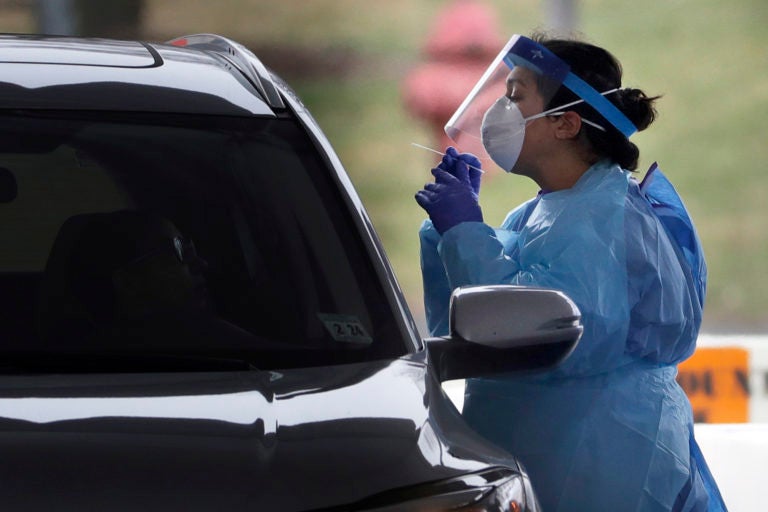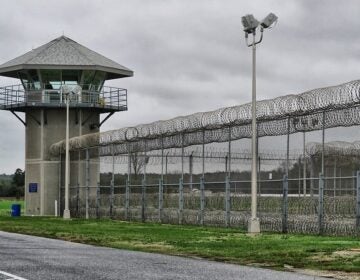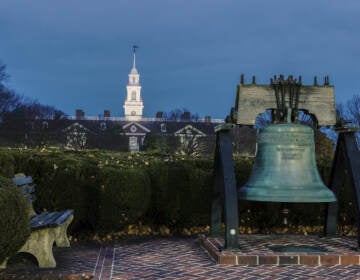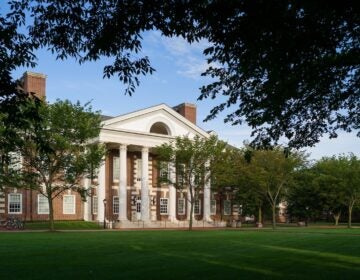Univ. of Delaware study: Vulnerable communities twice as likely to catch COVID-19
Race, language and income level play a big role in determining who will be infected with the coronavirus, according to researchers at the University of Delaware.

A medical staff member in protective gear administers a test for COVID-19 at a drive-through testing center in Paramus, N.J., Friday, March 20, 2020. (Seth Wenig/AP Photo)
When a disaster like a hurricane or a wildfire strikes an area, the Centers for Disease Control and Prevention compile data on the social vulnerability of victims. Those vulnerabilities include things like racial minority status, limited English-speaking ability, access to transportation, housing and disability status. The social vulnerability index of an area is a measure of a community’s resilience, or how quickly residents are able to bounce back from disasters or disease outbreaks.
Unlike a hurricane or wildfire, the coronavirus has impacted the entire country, which gives epidemiology researchers a chance to analyze a broad section of the country to find trends.
“Not surprisingly the social vulnerability characteristics were positively associated with increased COVID-19 case counts,” said Jennifer Horney, professor and founding director of the University of Delaware’s epidemiology program.
Different groups were at higher risk of infection depending on the region of the country.
“In some of the early states, like in the Northeast, where we had high case counts early on, minority racial, ethnic groups and people with limited English were far more likely to be infected,” she said.
On the West Coast, in Washington and Oregon, factors like household composition and disabilities were more likely to play a role in who was more at risk of infection. Along the Gulf Coast, housing and transportation needs were most predictive of who would get the virus.
Horney’s work with Dr. Ibraheem Karaye, a postdoctoral researcher, was published in June in the American Journal of Preventive Medicine. The study could help identify areas where more resources or public health interventions could reduce social vulnerabilities and improve the community’s resilience for the next disaster. There’s also immediate applications for the coronavirus response, like where to put more testing sites.
“It’s really important to know from a public health perspective who the most vulnerable people are for negative health outcomes, so that we can plan and prepare to have resources in place,” Horney said. “We can’t change some things, it would be great if we could go out and give everyone a better house or a better car, but we can develop policy responses and public health plans that can address these gaps if we know what they are in advance.”
According to the Delaware Division of Public Health, Hispanic/Latino residents are much more likely to contract the virus, with an infection rate of 423 per 10,000 residents. The infection rate for Black Delawareans is less than half of that at 171 per 10,000. The rate for white residents is also less than half of the rate for Black Delawareans at 72 per 10,000. That disparity in cases is even more significant considering white residents make up 69% of the state’s population while 22% are Black and 9% are Hispanic or Latino.
The state has also seen disparities among other factors including income level and non-English speakers.
“There’s a number of reasons why COVID-19 has a greater impact on some of these communities,” said Dr. Karyl Rattay, director of Delaware’s public health division. “Even health care access can be more of a challenge in some of these communities.”
The state has partnered with 12 groups in nine communities to assist those vulnerable groups. The groups sharing $720,000 include Cornerstone West Development Corporation in Wilmington, Habitat for Humanity, the Food Bank of Delaware, and La Esperanza in southern Delaware.
“We know that health is more than just health care,” Rattay said. “We believe that all Delawareans should have the opportunity to make healthy choices, regardless of their income, education or ethnic background, and we are excited about the work these communities will be doing to help us ensure all Delaware residents have access to the COVID-19 resources they need.”

Get daily updates from WHYY News!
WHYY is your source for fact-based, in-depth journalism and information. As a nonprofit organization, we rely on financial support from readers like you. Please give today.




![CoronavirusPandemic_1024x512[1]](https://whyy.org/wp-content/uploads/2020/03/CoronavirusPandemic_1024x5121-300x150.jpg)


